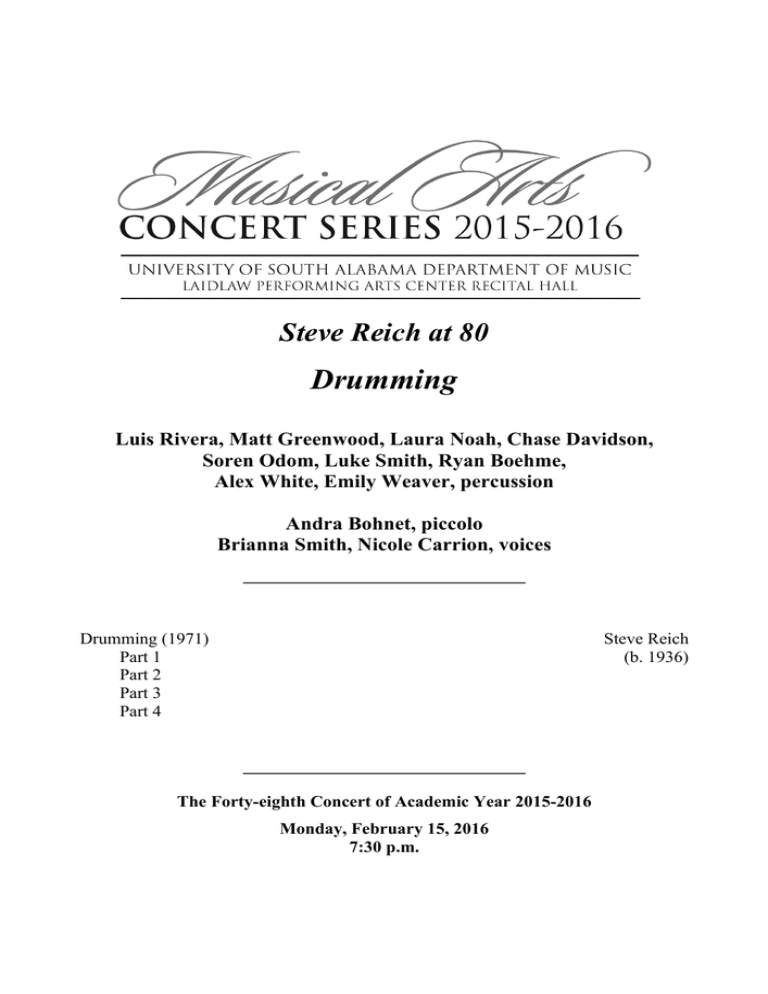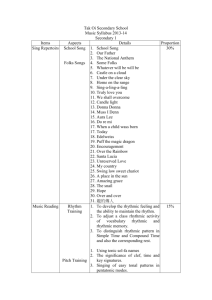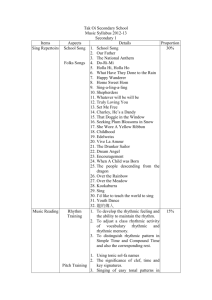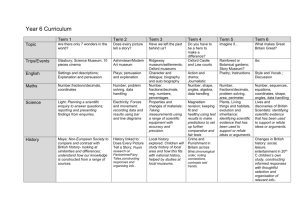Drumming Steve Reich at 80
advertisement

Steve Reich at 80 Drumming Luis Rivera, Matt Greenwood, Laura Noah, Chase Davidson, Soren Odom, Luke Smith, Ryan Boehme, Alex White, Emily Weaver, percussion Andra Bohnet, piccolo Brianna Smith, Nicole Carrion, voices ________________________________ Drumming (1971) Part 1 Part 2 Part 3 Part 4 Steve Reich (b. 1936) ________________________________ The Forty-eighth Concert of Academic Year 2015-2016 Monday, February 15, 2016 7:30 p.m. “For one year, between the fall of 1970 and the fall of 1971, I worked on what turned out to be the longest piece I have ever composed. Drumming lasts from 55 to 75 minutes (depending on the number of repeats played) and is divided into four parts that are performed without pause. The first part is for four pairs of tuned bongos; the second, for three marimbas played by nine players together with two women’s voices; the third, for three glockenspiels played by four players together with whistling and piccolo; and the fourth section is for all these instruments and voices combined. Drumming is my final refinement of the phasing process, where two or more identical instruments move gradually out of synchronization and then gradually back into synchronization but in a slightly different rhythmic relationship. I discovered this process in 1965 with It’s Gonna Rain and never used it again after Drumming. This work also introduced three new techniques – the process of gradually substituting notes for rests (or rests for notes) within a constantly repeating rhythmic cycle; the use of the human voice in an instrumental ensemble to precisely imitate the sound of the instruments; and gradual but complete changes of timbre while pitch and rhythm remain constant. The basic assumption about the voices in Drumming was that they would not sing words, but would precisely imitate the sound of the instruments. The women’s voices sing patterns resulting from the combination of two or more marimbas playing the identical repeating pattern one or more quarter notes out of phase with each other. By exactly imitating the sound of the instruments, and by gradually fading the patterns in and out, the singers cause them to slowly rise to the surface of the music and then to fade back into it, allowing the listener to hear these patterns, along with many others, actually sounding in the instruments. In the case of the glockenspiels, the extremely high range of the instrument precluded any use of the voice and necessitated whistling. Even this form of vocal production proved impossible when the instrument was played in its higher ranges, and this created the need for a more sophisticated form of whistle – the piccolo. In the last section of the piece these techniques are combined simultaneously with each imitating its particular instrument. The sections are joined together by the new instruments doubling the exact pattern of the instruments already playing. At the end of the drum section, three drummers play the same pattern two quarter notes out of phase with each other. Three marimba players enter softly with the same pattern. The drummers gradually fade out so that the same rhythm and pitches are maintained with a gradual change of timbre. At the end of the marimba section, three marimbas played in their highest range are doubled by three glockenspiels so that the process of maintaining rhythm and pitch while gradually changing timbre is repeated. The sections are not set off from each other by changes in key, the traditional means of gaining extended length in Western music. Drumming shows that it is possible to maintain one key for quite a while if there are instead considerable rhythmic/melodic developments together with occasional, but complete, changes of timbre to supply variety. I am often asked what influence my visit to Africa in the summer of 1970 had on Drumming. The answer is confirmation. It confirmed my intuition that acoustic instruments could be used to produce music that was genuinely richer in sound than that produced with electronic instruments, as well as confirming my natural inclination towards percussion. Drumming begins with two drummers building up the basic rhythmic pattern of the entire piece from a single drum beat, played in a cycle of twelve beats with rests on all the other beats. Gradually, additional drum beats are substituted for rests, one at a time, until the pattern is completely built up. The reduction process is simply the reverse where rests are gradually substituted for beats, one at a time, until only a single beat remains. The reduction at the end of the glockenspiel section leads to a build-up for the drums, marimbas, and glockenspiels simultaneously. The first basic rhythmic pattern built up by the two drummers at the start of the piece undergoes changes of pitch, phase position and timbre, but all the performers play this pattern, or some part of it, throughout the entire piece.” – Steve Reich, 1971








